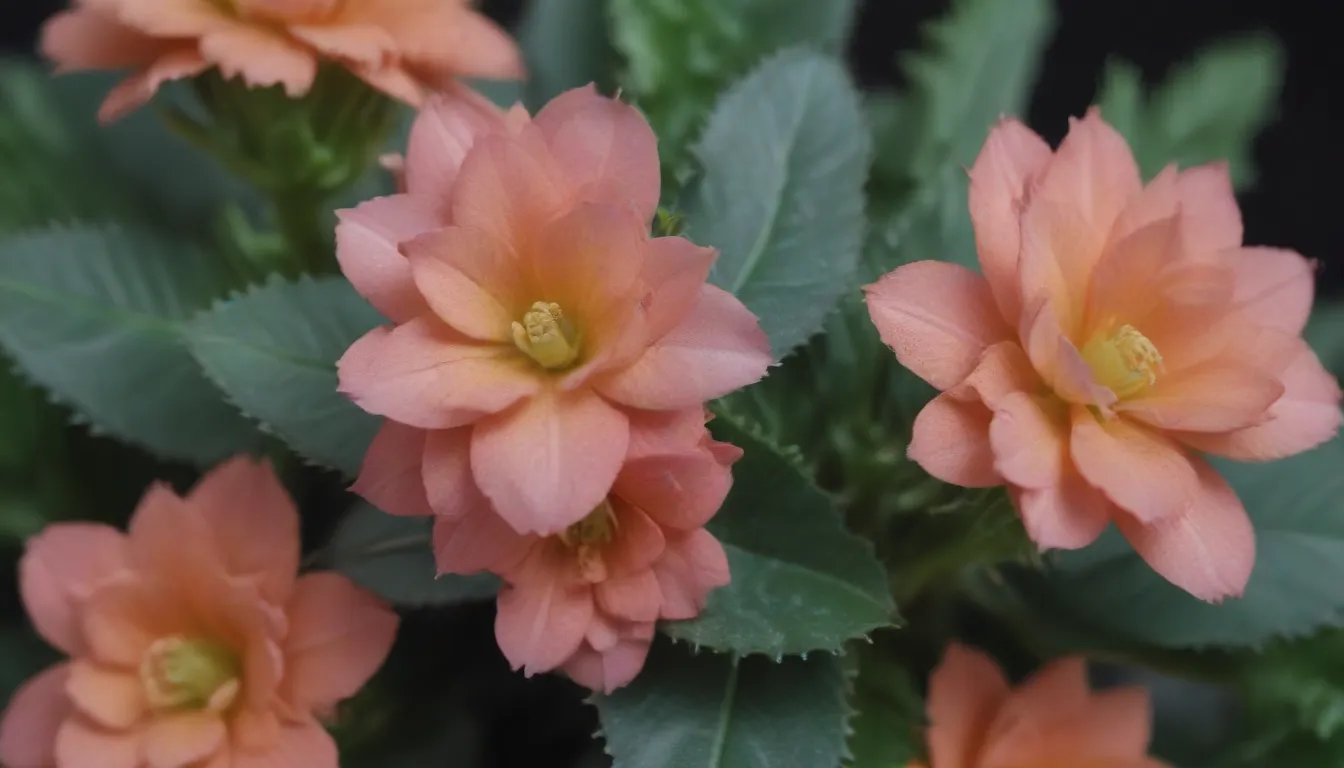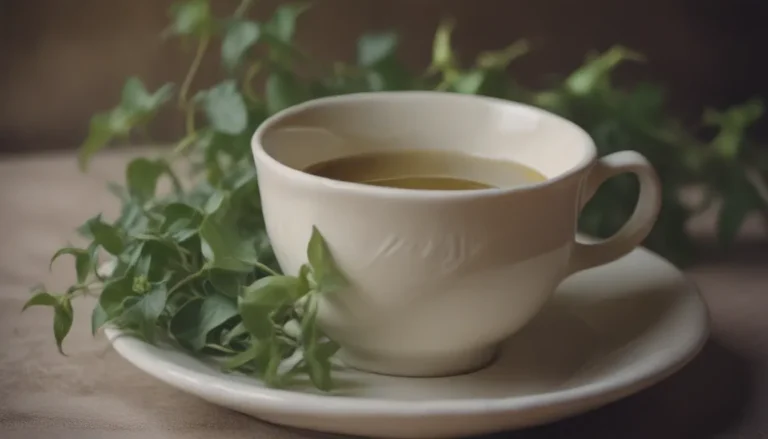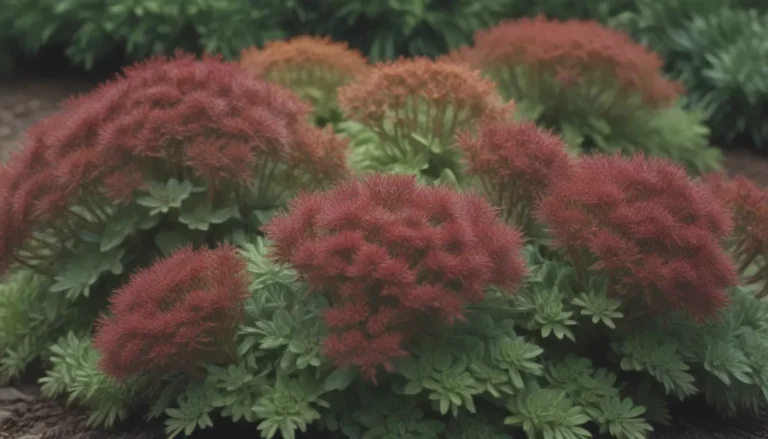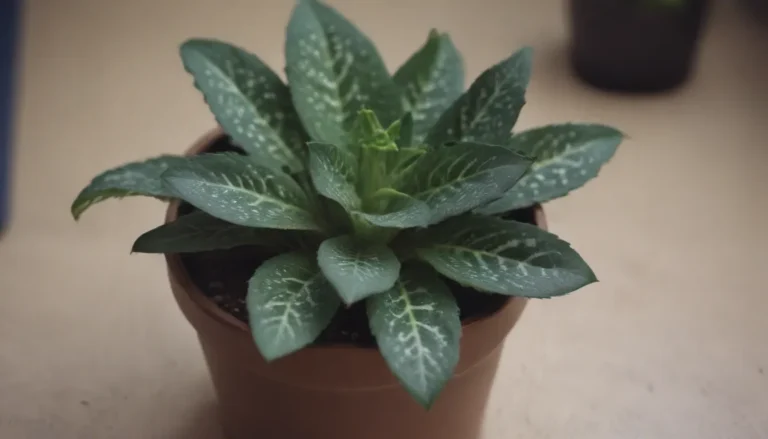The Ultimate Guide to Growing and Caring for Kalanchoe Thyrsiflora

If you’re a plant lover looking to add a unique and stunning succulent to your collection, look no further than Kalanchoe thyrsiflora. Also known as paddle plant, flapjacks, dog tongue, or desert cabbage, this exquisite succulent is distinguished by its flat, rounded leaves and a thin coating of white powder called farina. But growing and caring for Kalanchoe thyrsiflora requires some special attention to ensure it thrives in your home or garden.
Getting to Know Kalanchoe Thyrsiflora
Before we dive into how to care for your Kalanchoe thyrsiflora, let’s take a closer look at this unique plant:
- Light: This succulent thrives in bright light, whether indoors or outdoors.
- Soil: It loves loose, sandy potting mix with good drainage for optimal growth.
- Water: Kalanchoe thyrsiflora is drought-tolerant, so be sure to let the soil dry out completely between waterings.
- Temperature and Humidity: It prefers warm temperatures and low-humidity conditions due to its native habitat.
- Fertilizer: Feed it with a balanced liquid houseplant fertilizer during the growing season.
- Propagation: Easily propagate through stem cuttings or offsets in the spring or summer.
Now that we’re acquainted with this charming succulent let’s delve into the details of caring for your Kalanchoe thyrsiflora.
Kalanchoe Thyrsiflora Care Tips
Light
To make sure your Kalanchoe thyrsiflora thrives, give it plenty of bright light. Here are some tips to ensure it gets the right amount of light:
- Indoor plants: Place them in direct or bright, indirect sunlight from a south-facing or west-facing window.
- Outdoor plants: Choose a spot with full to part sun, and provide afternoon shade in hot, dry climates.
With adequate sunlight, you’ll notice the plant’s leaves developing attractive red edges, adding to its beauty.
Soil
Proper soil is key to the health of your Kalanchoe thyrsiflora. Follow these tips when selecting or preparing the soil:
- Use a loose, sandy potting mix with good drainage.
- Consider a premade cactus soil or succulent mix, or mix perlite, coarse sand, and regular potting mix.
Water
While Kalanchoe thyrsiflora stores moisture in its leaves, be mindful of its water needs:
- Wait for the soil to dry out completely before watering deeply.
- Ensure the pot drains fully to prevent root rot.
- Reduce watering frequency in winter to accommodate the plant’s needs.
Temperature and Humidity
Maintaining the right temperature and humidity levels is crucial for the well-being of your Kalanchoe thyrsiflora:
- It prefers warm temperatures and low humidity due to its arid climate origins.
- Protect it from temperatures around 30 degrees Fahrenheit, as it can damage the foliage.
- Avoid overly humid conditions to prevent fungal infections.
Fertilizer
Keep your Kalanchoe thyrsiflora healthy by feeding it a balanced liquid houseplant fertilizer:
- Dilute the fertilizer to half strength and apply monthly during the growing season.
- Start in late winter or early spring, continuing through summer, and withhold feeding in fall and winter.
Pruning and Propagating Kalanchoe Thyrsiflora
Pruning
While Kalanchoe thyrsiflora doesn’t require regular pruning, you may notice some growth before it blooms:
- Allow the plant to grow taller and appear etiolated before blooming.
- Leave this growth intact to enjoy the upcoming flowers.
Propagating
If you want to expand your Kalanchoe thyrsiflora collection, propagation is simple and rewarding. Here’s how you can propagate it:
Using Stem Cuttings
- Gather a small plant pot, succulent soil, and a clean, sharp blade to take stem cuttings.
By Offsets
- Remove offsets, or baby plants, from the base of a healthy Kalanchoe thyrsiflora to propagate new plants.
- Prepare small plant pots, succulent soil, and clean shears or pruners for this method.
Growing From Seed
In addition to propagation methods, you can grow Kalanchoe thyrsiflora from seed for a rewarding gardening experience.
Dealing With Pests and Diseases
Keep an eye out for common pests such as mealybugs, scale, and aphids that may target your Kalanchoe thyrsiflora:
- Check plants regularly for signs of infestation.
- Use water spray or rubbing alcohol-soaked cotton swabs to remove pests.
- Avoid using oils, as they can damage the plant’s protective powder coating.
Blooming and Common Issues
Blooming
Encouraging your Kalanchoe thyrsiflora to bloom requires patience and proper care:
- Central rosettes will grow tall and send up flower spikes in late winter or early spring.
- Enjoy clusters of yellow, tube-shaped flowers with a sweet, honey-like scent.
Common Problems
Address these common issues that may arise while caring for your Kalanchoe thyrsiflora:
- Powdery Leaves: Do not remove the powdery coating, as it helps the plant repel water.
- Yellow Leaves: Overwatering is often the cause of soft, translucent, or yellow leaves. Allow the soil to dry out before watering.
- Wrinkled Leaves: If leaves appear wrinkled or shriveled, your plant may need more water. Deeply water and monitor soil moisture to revive the plant.
By following these care tips and addressing common issues promptly, you can enjoy a healthy and vibrant Kalanchoe thyrsiflora in your home or garden.
Conclusion
In conclusion, Kalanchoe thyrsiflora is a delightful addition to any plant lover’s collection, thanks to its unique appearance and low-maintenance care requirements. By providing ample light, well-draining soil, appropriate watering, and regular fertilization, you can ensure your Kalanchoe thyrsiflora thrives. Remember to propagate when needed, watch for pests and diseases, and encourage blooming for a beautiful display of yellow flowers. With proper care and attention, your Kalanchoe thyrsiflora will flourish and bring joy to your indoor or outdoor space. Happy gardening!





